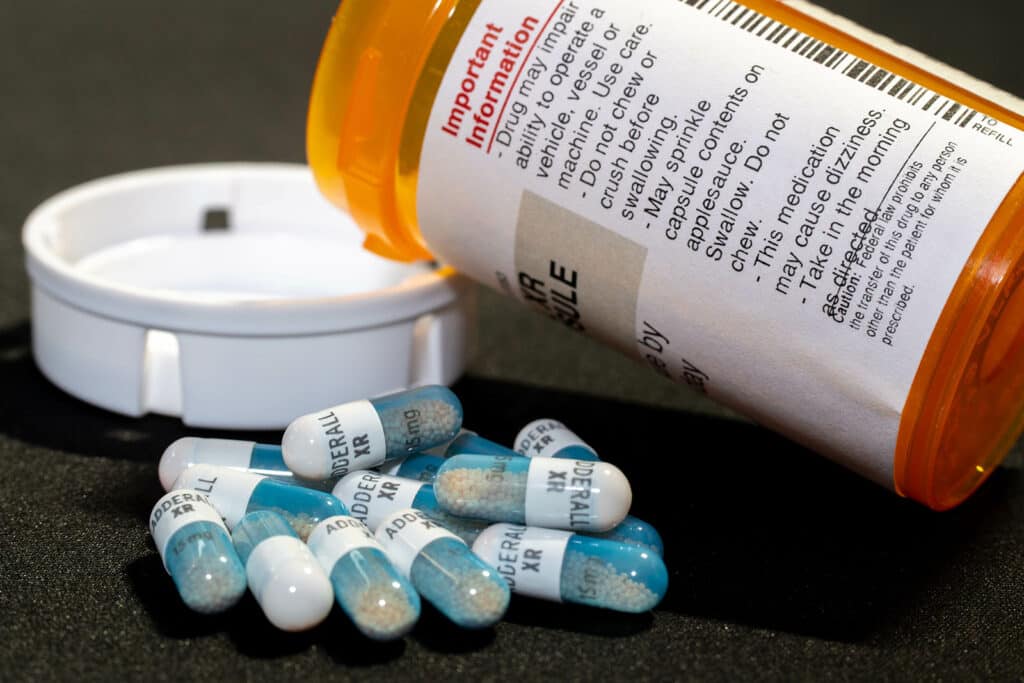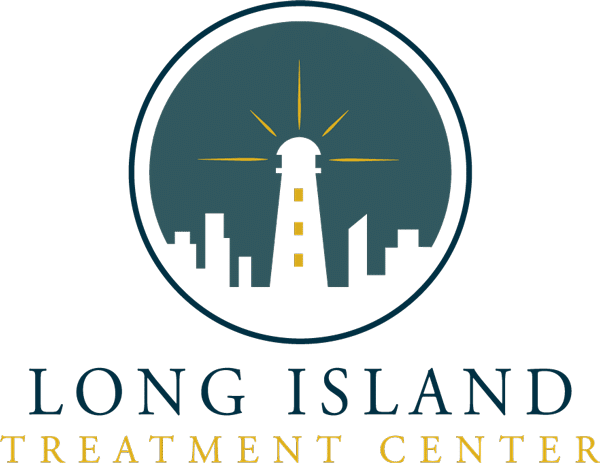Stimulant addiction is a growing crisis not only across New York, but all over the nation. Its symptoms develop rapidly and can quickly become life-threatening if left untreated.
If you or someone you love is struggling with stimulant addiction in Long Island, this guide will have you covered.
We’ll discuss everything you need to know about this stimulant use disorder, including its triggers, signs to look for, and various effective treatment options available in the State.
Table of Contents
A Brief Overview of Stimulants and How They Work
Stimulants are a class of drugs used to increase the activity of the central nervous system (CNS). It includes a wide range of compounds with varying levels of potency and legality.
For example, the simplest types of stimulants are caffeine and nicotine, which also have addictive properties.

On the other hand, there are more potent prescription stimulants that are used to treat various conditions, such as Attention Deficit Hyperactivity Disorder (ADHD) and narcolepsy (excessive daytime sleepiness)
However, most of these drugs are under the Controlled Substances Act and require a medical prescription by a qualified doctor, such as Adderall, Ritalin, Modafinil and Methamphetamines.
There are also illegal hard stimulant drugs with no approved uses like crack cocaine, which is one of the most potent and addictive stimulants
Besides the primary medical indications, stimulants are also abused due to their effects, including:
- Wakefulness and increased attention
- Increased energy levels
- Elevated mood
- Decreased appetite
The addictiveness of stimulants comes from their ability to hijack the reward system in the brain, especially cocaine and amphetamines.
These drugs cause a surge in dopamine levels, creating a euphoric sensation that reinforces the individual’s desire to experience it again.
However, repeated use leads to tolerance, so the person needs increasingly higher doses to achieve the same initial effects. This progressive escalation leads to dependence and addiction quite rapidly.
How Common is Stimulant Addiction in Long Island?
Stimulants are among the most commonly addictive drugs, not only in Long Island, but all across the country.
In fact, a recent report shows that over 5.1 million people over the age of 12 misuse stimulants, and that’s only counting the prescribed drugs, not the illegal ones, which roughly translates to about 2.1% of the population.
Another report by the Centers for Disease Control and Prevention (CDC) shows that over 21% of overdose deaths in 2021 came from cocaine alone with the overall use of stimulants increasing by 37% in the same year.
Besides their deadly impact, stimulants can also increase the mortality rate indirectly as they cause serious conditions with chronic abuse, such as organ damage, strokes, and seizures.

What Causes Stimulant Addiction?
Stimulant addiction usually arises from a complex combination of factors, rather than a single one. These factors can be biological, psychological, and/or social. Here’s a breakdown of the key contributors:
Predisposition to Stimulant Dependence
Some studies suggest that specific genes may influence an individual’s susceptibility to developing stimulant dependence.
In other words, some people naturally develop tolerance towards stimulant doses much faster than others, so they become dependent on stimulant doses very quickly.
Self Medication
Another major reason why some people might develop stimulant addiction is self-medication. As previously established, doctors may prescribe stimulants to treat certain conditions.
However, it’s critical that patients stick to the recommended doses of the drug to avoid accidentally developing dependence.
This usually happens when patients exceed the recommended dose or don’t stop taking the drug when instructed to do so.
Family History
Some studies suggest that having a family history of substance abuse increases the risks of other family members following their path.
However, it’s crucial to remember that family history doesn’t predetermine whether someone will develop stimulant dependence. In other words, studies only establish that genetic predisposition may increase vulnerability, but it’s still not a guaranteed outcome.
Early Exposure
Studies also suggest that early exposure to stimulants may increase the risk of developing dependence later in life.
This is because brains in the development stage are more likely to succumb to substance use, especially if in the presence of external influences such as low self-esteem, peer pressure, mental health issues, and underlying medical conditions.
Stressful Environments
Exposure to continuous stress, whether it’s professional or academic, can drive some individuals to use stimulants for their energy and focus elevating properties.
This is one of the most popular forms of stimulant abuse and poses a significantly high addiction risk.

How to Identify Stimulant Addiction
Stimulant addiction involves a variety of symptoms and warning signs. As time moves on, these side effects can worsen dramatically and lead to life-threatening conditions. Here’s a brief overview of the conditions associated with stimulant addiction.
Short-Term Signs and Symptoms
- Excessive talkativeness and over-excitement
- Exaggerated self-confidence and impulsivity, which leads to engaging in risky actions
- Dilated pupils
- Increased breathing and heart rate
- Irritability and sudden changes in mood
- Excessive sweating and cravings
- High blood pressure
Long-Term Signs and Symptoms
- Experiencing withdrawal symptoms when not using for a short amount of time
- Significant weight loss
- Dissociation from society and failing to meet personal, professional, or academic obligations due to prioritizing drug use
- Strained relationships with family, friends, and significant others
- Developing heart conditions like hypertension and a high risk of heart attacks
- Poor skin health with a noticeable outbreak of acne and sores

What Are the Best Treatments for Stimulant Addiction?
Treating stimulant addiction typically depends on a combination of treatment programs to address the complexity of the condition. The following are the most commonly used methods to treat stimulant addiction.
Medical Detoxification
Detox is often the first step in treatment, as it helps individuals safely manage withdrawal symptoms by gradually purging the stimulants and their metabolites from the body.
The process is usually done under medical supervision, as doctors may use tapering to gradually reduce the dose of stimulant used to reduce the impact of withdrawal symptoms and keep patients as comfortable as possible.
Depending on the severity of the stimulant addiction and the type of stimulant used, this process can be inpatient or outpatient.
The difference between the two is that inpatient treatment is a residential one, in which the patient remains in the rehabilitation facility throughout the treatment period.
Behavioral Therapy
This form of therapy equips individuals with the necessary skills and motivation to develop healthy coping mechanisms, which helps them avoid triggers and maintain long-term recovery.
The most popular forms of behavioral counseling include:
- Cognitive behavioral therapy (CBT): Helps individuals identify and change negative thought patterns and behaviors that contribute to their addiction.
- Dialectical behavior therapy (DBT): Teaches individuals skills to manage difficult emotions and cope with stress in healthy ways.
Peer Support Groups
Studies revealed that connecting with individuals who have shared experiences can be incredibly valuable in recovery.
Peer support groups, or group therapy, can offer that by providing a safe and supportive space where individuals suffering from stimulant withdrawal and drug addiction can share experiences, learn from others, and receive encouragement throughout the recovery journey.
Sober Living Homes
Depending on the severity of stimulant addiction, treatment can take a long time. In that case, recently recovered patients might need extended rehabilitation to be able to get back into society.
Sober living homes can help bridge that gap by offering a structured living environment safe from triggers and stress factors.
Holistic Therapy
While individually, holistic therapy may not do much to treat addiction, it can massively boost its effectiveness when combined with other forms of treatment.
Holistic therapy addresses the person’s mental, physical, and emotional well-being, helping them to gain self-confidence to overcome urges to relapse. It includes a variety of approaches, including yoga, acupuncture, massage, meditation, etc.

Important Notes on Stimulant Addiction
Lastly, there are some essential notes to keep in mind regarding stimulant addiction to ensure a long-term recovery.
Stimulant Has a High Relapse Rate
Overcoming stimulant addiction can be a challenging journey, especially in conditions like long-term addiction, consuming stimulants at high doses, or using them in combination with other addictive substances.
That’s why you need to be patient and stick to long-term relapse prevention plans to ensure a reliable recovery and avoid relapsing
Family and Community Roles Go a Long Way
Supportive family and friends play a vital role in recovery. This is because encouraging open communication and involvement in treatment plans creates a positive environment that motivates patients to maintain their progress.
Medical Supervision is Crucial
Seeking the help of qualified professionals during substance abuse treatment is remarkably essential to achieving long-term recovery.
This is because they can provide medication-assisted treatment, therapy, and guidance tailored to individual needs.
They also monitor and manage the withdrawal phase to avoid any life-threatening complications associated with severe addiction and substance use disorders.
Conclusion
Stimulant addiction is a serious condition that requires immediate attention and seeking the right kind of health care to increase the chances of a successful recovery.
If you or your loved ones are in need of help in Long Island, consult Long Island Treatment Center for a professional and highly customized stimulant addiction treatment plan prepared by qualified professionals to help you achieve a drug-free future.

